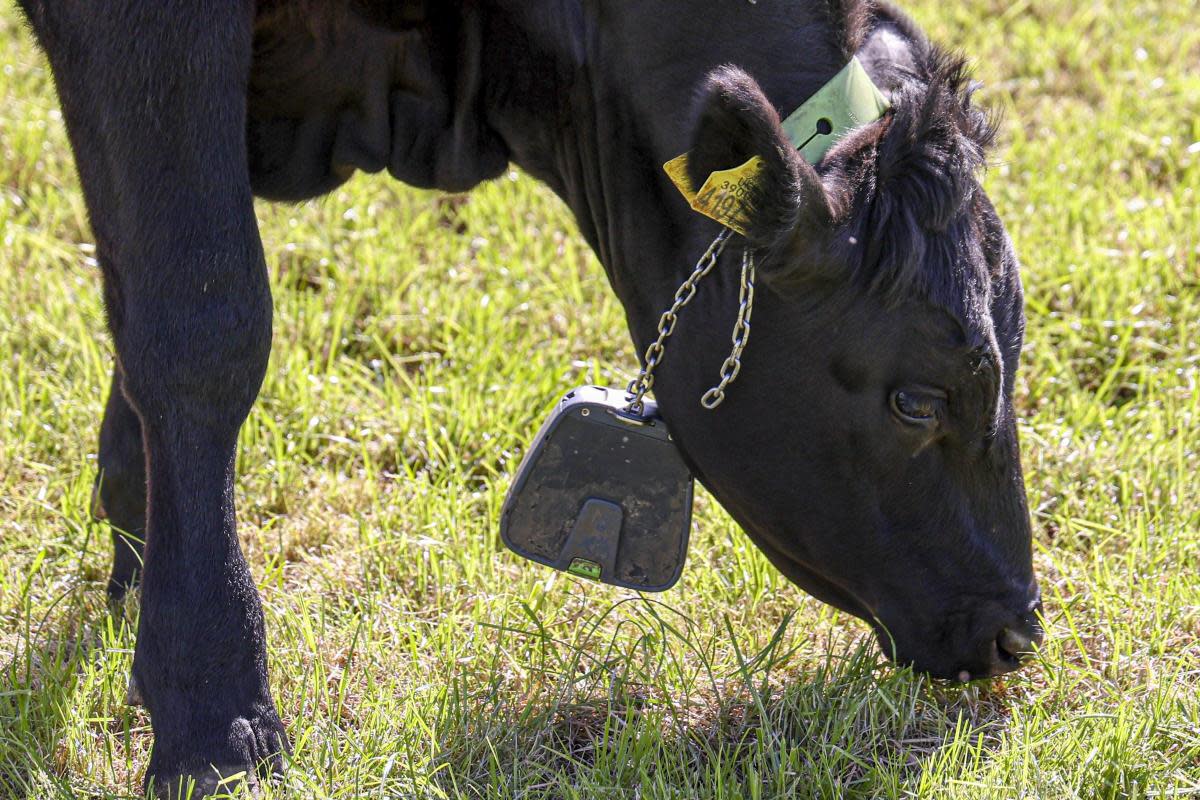Costs prevent expansion of virtual fencing in livestock systems

Labour requirements for managing cattle at pasture could be reduced with the introduction of virtual fencing, according to AFBI Hillsborough researchers.
Francis Lively and Conor Holohan said that key messages include the fact that virtual fence technology uses a combination of audio and electrical stimuli to contain grazing livestock within a GPS boundary.
Research to date indicated that virtual fencing which was demonstrated at the AFBI open days at Hillsborough last week can be an effective and ethically acceptable technology for use with grazing livestock and could offer an alternative to physical fencing for sub-dividing grazing platforms to improve grassland management. However, reductions in the cost of the technology will be required to encourage uptake at a farm level.
Monitors fitted to cattle cost up to £300 while sheep monitors could be around £200.
Virtual fencing (VF) is a technology which enables grazing livestock to be managed without the use of a physical fence. The system typically comprises a mobile phone application (through which the user sets the VF boundary) and a GPS-enabled neck collar. When the animal approaches the VF, it receives an audio warning to turn around. This is followed by an electric pulse if it proceeds beyond the VF.
Over the last three years, AFBI has conducted seven studies using 300 animals, including growing cattle, suckler cows and calves, ewes and dairy cows. The primary focus of the studies has been to access the impact of the technology on animal welfare, however, the effectiveness of the technology has also been evaluated.
Collectively, the data generated from this project has demonstrated that virtual fence technology is an effective means of containing groups of animals (cattle or sheep) within a set boundary in a welfare-friendly environment. The results have indicated that regardless of animal age, species, or environment they are able to be trained to use the equipment provided that they are trained to the virtual fence in a small paddock at the outset. Despite some individual animal variation only one animal in the complete group evaluated did not successfully train to use the virtual fence collars. A possible explanation might have been that the animal might have been deaf.
A range of grazing conditions was evaluated, and results would support the conclusion that virtual fencing can be a suitable replacement for electric fencing, offering a simpler and more labour-efficient method for managing grasslands within both lowland and upland pastures with no difference in animal performance. Although the technology has proved to be successful the current cost of it relative to electric fencing will limit the uptake at a farm level unless prices drop, or grant aid is provided to assist farmers purchasing the equipment.
The project at AFBI was funded by DAERA and Horizon 2020.

 Yahoo News
Yahoo News 
